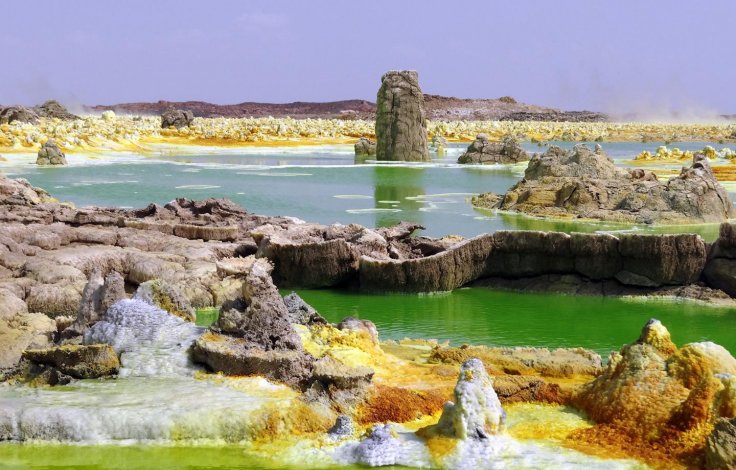Earth, the blue planet is the only space body that supports life in the solar system. Even in some areas of the earth where there are very harsh environments, unicellular organisms like bacteria used to thrive, and this factor indicates the habitability of our planet. However, a new study conducted by researchers has found a place on the earth where no life exists.
Life is absent in Dallol

The study conducted by a team of European researchers has found that even microbial forms of life are absent in the hot, saline, hyperacid ponds in the Dallol geothermal field in Ethiopia.
Widely considered as the most torrid environments on earth, Dallol, located in the Ethiopian depression of Danakil extends over a deep volcanic crater completely filled with salt. Toxic gases emanate in this area, and it is also the ground of intense hydrothermal activity.
Even in winter, the temperature in this area is 45 Degree Celsius, and pH value is even negative due to the abundance of hyperacid pools. The research report published in the journal Nature Ecology and Evolution suggested that life in any form is completely absent in Dallol's extremely torrid ponds.
"After analyzing many more samples than in previous works, with adequate controls so as not to contaminate them and a well-calibrated methodology, we have verified that there's no microbial life in these salty, hot and hyperacid pools or in the adjacent magnesium-rich brine lakes.
What does exist is a great diversity of halophilic archaea in the desert and the saline canyons around the hydrothermal site. But neither in the hyperacid and hypersaline pools themselves nor in the so-called Black and Yellow lakes of Dallol, where magnesium abounds," said Lopez Garcia, a biologist at the French National Centre for Scientific Research (CNRS) in a recent statement.
What does the study prove?
Researchers who took part in this study suggested that the new discovery could help to circumscribe the limits of habitability while interpreting the morphological biosignatures on earth and beyond.
The study also proves that there are several places on earth's surface which are sterile even though they contain liquid water. Researchers also noted that the mere presence of liquid water cannot be considered a habitability criterion, as there are several other factors required for life to evolve and thrive.









